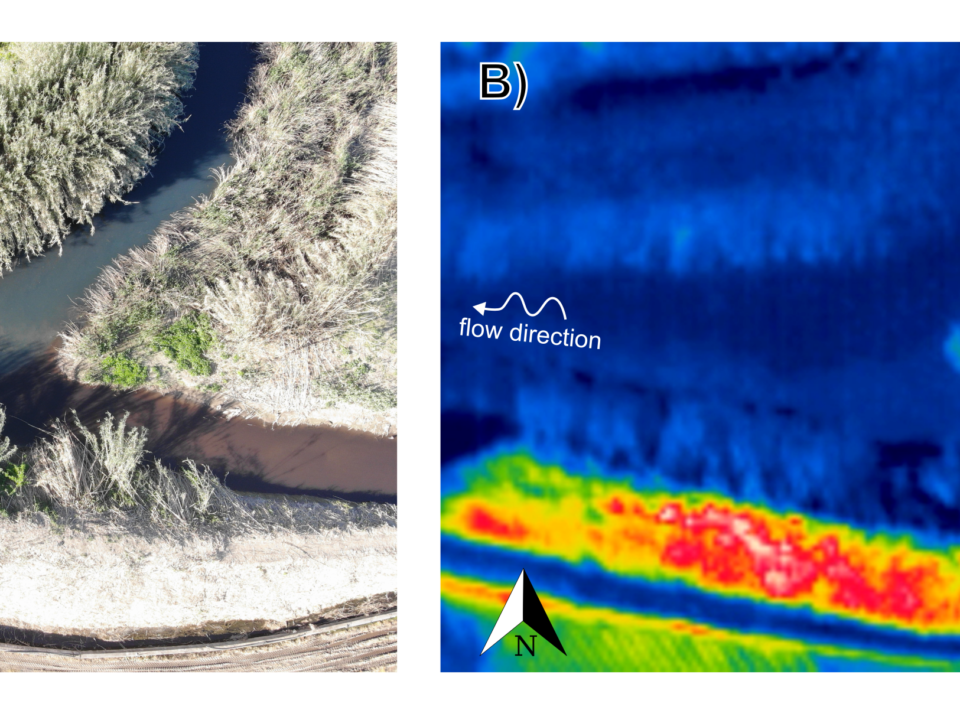http://antarvasnavideos.pro sex videos kinky babe fisting her large pussy. https://bigboobslovers.net/ hungry mom loves throat fucking.

Summer Course on UAS Applications for Environmental Monitoring: Data Preparation and Calibration
11 June 2018
Analysing the Potential of OpenStreetMap Data to Improve the Accuracy of SRTM 30 DEM on Derived Basin Delineation, Slope, and Drainage Networks
31 July 2018HARMONIOUS TEAM is organizing the first Training Course entitled “Harmonized UAS techniques: Introduction to data acquisition and preprocessing” that will be held in Reykjavik next September.
Our aim is to provide an hands-on experience on the use of UAS for Environmental Monitoring. The course will combine theoretical notions on vegetation and soil monitoring with practical field experiences allowing the transition from theory to practice. During the course, a number of field experiments will be carry out that will be coordinated by the leaders of the working groups of the COST Action Harmonious. For this reason, we will keep the student-teacher ratio low.
We are selecting 16 talented trainees (Ph.D. Students, Post-Doc, and young researchers) from COST Full Member and COST Cooperating Member. Selected traineesthat will receive a grant of 1500€ to cover traveling and accommodation expenses.
Potential candidates should submit their request by mail to caharmonious@gmail.com with a motivation letter, a recommendation letter and their CVs by the 20th of July 2018.
Program
Sunday 2ndSeptember – Agricultural University
13:30-14:00 Arrival & registration
14:00-14:30 Introduction
14:30-14:45 HARMONIOUS Overview (SM)
14:45-15:30 UAS Platforms & Sensors (VM)
15:30-16:30 Icebreaker session
16:30-17:00 UAS Regulations & Flight Operations (VM)
17:00-17:30 Svarmi platforms/sensors (VM)
19:30 Tour Reykjavik Downtown / Group dinner –SeaBaron
Monday 3rdSeptember – University of Iceland
09:00-10:00 The scaling issue in environmental observations (SM)
10:00-12:00 Spectroscopy and UAS radiometric correction (AM/GC)
12:00-13:30 Lunch break
13:30-17:30 Field spectroscopy practical exercise (AM/GC)
FREE EVENING
Tuesday 4thSeptember – University of Iceland
09:00-10:00 Intro to Photogrammetry (PM)
10:00-11:00 SfM Processing & Quality Assessment (MJ)
11:00-12:30 Flight planning exercise (VM/GM)
12:30-14:00 Lunch break
14:00-17:00 SfM Lab Exercise (MJ/PM)
17:00-17:30 Overview of field day & split into groups (PM/VM)
19:30 Group dinner – Studentakjallarinn
Wednesday 5thSeptember – Meet at Agricultural University
09:00-18:00 UAS Field Day
FREE EVENING
Thursday 6thSeptember – University of Iceland
09:00-10:00 GNSS positioning for UAS (NP)
10:00-12:30 RTK/PPK GNSS lab exercise (NP)
12:30-14:00 Lunch break
14:00-15:00 Multispectral sensors (GM)
15:00-17:00 Groups – download/processing field data
17:00-17:30 Soil moisture monitoring and dynamics (SM)
19:00 Group Dinner –Icelandic Street Food and Ice Cream
Friday 7thSeptember – University of Iceland
09:00-09:30 Overview of group exercise (GM)
09:30-12:30 Group work & prepare presentation (all)
12:30-14:00 Lunch break
14:00 onwards Social activity – traditional Geothermal bathing at Laugardashöll
FREE EVENING
Saturday 8thSeptember – Agricultural University
09:00-11:30 Mini-workshop: group presentations (VM/SM/GC)
11:30-12:30 Closing session/discussions (VM/SM/GC)
12:30 Departure
Trainers
AM Dr Alasdair MacArthur (University of Edinburgh, UK)
Alasdair Mac Arthur has a PhD in field spectroscopy and radiative transfer modelling. He has over 15 years’ experience of spectroscopy field and laboratory research. Alasdair developed and delivered the GeoSciences, U. of Edinburgh, Near-ground Earth Observation and the Hyperspectral Remote Sensing MSc programme courses and has lead spectroscopy and Earth observation field training summer schools across Europe annually since 2009. Alasdair was the Manager of the NERC/NCEO Field Spectroscopy Facility from 2009 to 2016. Alasdair has a particular interest in the performance and utility of spectrometer systems and their laboratory calibration. His field and laboratory research has led him to develop an innovative light-weight dual-field-of-view dual spectrometer system (the Piccolo) for small unmanned aerial vehicles (sUAV), fixed-point logging and ‘mobile’ spectroscopy use. Alasdair was Chair of COST Action ES1309 ‘OPTIMISE’, a network of over 190 scientists from 28 countries investigating ‘reflectance’ and fluorescence measurements to assess photosynthesis and the use of sUAV as platforms from which to make these measurements. He is now a MC member of COST Action CA17134 ‘Optical synergies for spatiotemporal sensing of scalable ecophysiological traits’ (SENSECO) linking the knowledge gained during OPTIMISE to different spatial and temporal scales and to air and space-borne Earth observations.
GC Dr Giuseppe Ciraolo (Universitàdegli Studi de Palermo, Italy)
Giuseppe is an Associate Professor at the University of Palermo (Italy). In his research activities he has been developing methods and algorithms to retrieve quantitative information from multispectral images acquired from UAV, airborne and satellite platforms. His main expertise thus regards monitoring the environment with a special attention to the terrestrial vegetation, the surface soil moisture and the sea-water quality in coastal areas. He is also a lecturer on application of remote-sensing techniques to hydrology and water quality and on GIS applications in hydrology. He is specialist in coupling remote sensing with numerical modelling and field and laboratory measurements. Giuseppe is Training School Coordinator for HARMONIOUS.
GM Dr Giorgos Mallinis (Democritis University of Thrace, Greece)
Georgios obtained his Ph.D. in Remote Sensing and GIS of forest ecosystems, at the Aristotle University of Thessaloniki (2006). He is an Assistant Professor at the Democritus University of Thrace, Greece. His educational duties include teaching courses in Remote Sensing, Chartography and GIS. His research is focused on the field of optical satellite and airborne remote sensing and GIS applications in environmental mapping and monitoring as well as in disaster management. Georgios has been involved in various projects, the most recent of which is LIFE IP 4 NATURA «Integrated Actions for the Conservation and Management of NATURA 2000 Sites, Species, Habitats and Ecosystems in Greece LIFE16 IPE/GR/002. His work has been published in peer-reviews journals, books, and international conferences. Georgios is vice-leader of HARMONIOUS COST Action Working Group 1 (Data Preparation and Calibration).
MJ Dr Mike James (Lancaster University, UK)
Mike James is a Reader at the Lancaster Environment Centre, Lancaster University, U.K.. He has a background in volcanology and over a decade of experience in using photogrammetric and laser scanning approaches to understand the dynamics of environmental processes. His work has covered a wide range of systems from glacial to coastal, and has included work on active lava flows and soil erosion. Mike started using ‘structure-from-motion’ (SfM) software to derive 3D models from ground-based imagery in 2010 and has subsequently focussed more on UAS imagery. Much of his recent work has been aimed at improving the quality of topographic data derived from SfM-processing of UAS data, through considering the underlying photogrammetric processes and understanding the uncertainties involved.
NP Dr Nigel Penna (Newcastle University, UK)
Nigel Penna is Senior Lecturer at Newcastle University, where he teaches and researches GNSS geodesy and surveying. He holds a BEng degree in Civil Engineering, and MSc and PhD degrees in Engineering Surveying and Geodesy, all from the University of Nottingham. After post-doctoral work at Nottingham, he worked at Curtin University in Australia for four years, before joining Newcastle in 2004. His primary research interests are precise GNSS positioning, applied to monitoring and understanding Earth’s movements and processes, the oceans, and unmanned vehicles, including Wave Gliders for sea surface measurement and mapping from UAS. Further information, including a list of publications, may be found on https://www.ncl.ac.uk/engineering/staff/profile/nigelpenna.html#background.
PM Dr Pauline Miller (The James Hutton Institute, UK)
Pauline is a Research Fellow at The James Hutton Institute, a multidisciplinary research institute located in Scotland, UK. Pauline has a background in Geomatics (PhD, Newcastle University, 2007) with emphasis on photogrammetry and LiDAR. Pauline’s research has focussed on photogrammetric methodologies and optimisation of DEM quality for geohazard applications, including landslide hazards and glaciological studies. Since 2012 Pauline has worked with UAS systems, primarily in evaluating SfM approaches for morphological analysis. More recently, her research has also included characterisation of fluvial environments for hydromorphological and flooding applications, using UAS and LiDAR methodologies, and she has interests in UAS multispectral and thermal imaging. Pauline is MC member and lead of HARMONIOUS COST Action Working Group 1 (Data Preparation and Calibration).
SM Dr Salvatore Manfreda (Universitàdegli Studi della Basilicata, Italy)
Salvatore Manfreda received his Ph.D. in Environmental Monitoring and Modeling in 2004. He started his career as researcher associate at Princeton University (2004-2005), became Assistant Professor in 2008, and Associate Professor in Hydraulic Constructions and Hydrology in 2014 at the University of Basilicata. He has a broad interest in hydrology and ecohydrology, with particular emphasis on distributed modeling, flood prediction, stochastic processes in hydrology, soil moisture process, delineation of flood prone areas, vegetation patterns and UAS monitoring. His research activity has produced more than 120 publications. Salvatore is leader (Action Chair) of the HARMONIOUS COST Action.
VM Mr Victor Madrigal (Svarmi, Iceland)
Experienced GIS and EO specialist, passionated about using and producing spatial data for its analysis, in order to understand better our world and enhance environmental decision-making scenarios. Currently an owner of Svarmi, an Icelandic company that specialises in remote sensing with both UAV and satellite platforms. I am the main EO specialist within the company, working within the Data Processing and Analysis department, where besides acquiring data with drones, I also develop software tools for the analysis of spatial data, ranging from classification, volumetric accounts or usage of machine learning. Also developing an integrated system for the study of carbon fluxes with the help of UAV platforms.
website
big black teen apparel theft.http://desivideos4k.com/ cassandra nix and eva karera threesome.





